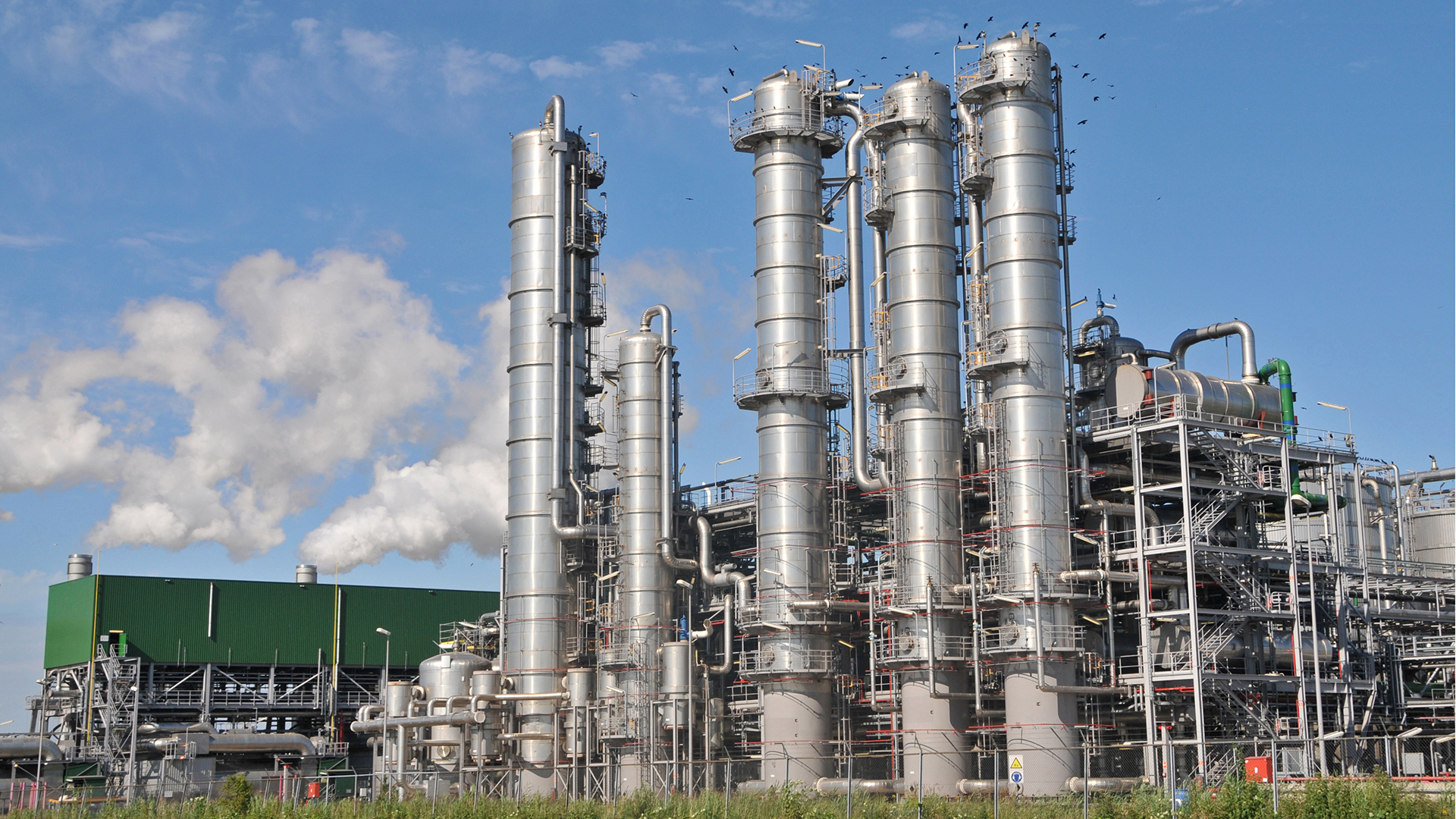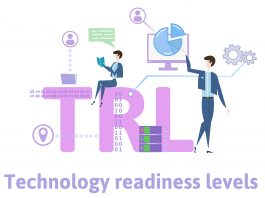CJ Evans, Managing Director of American Diversified Enterprises and Co-Founder of the Alternative Fuels & Chemicals Coalition, discusses the key issues that need to be addressed in the journey to solving the global climate crisis.
The global climate crisis is not going away. In fact, it is getting worse, almost every day.
However, there is hope, as outlined in the eBook I wrote in collaboration with Innovation News Network, YOU, ME, life on the planet, and the climate crisis, which was published in May.
To have hope, we need solutions … now.
One of the key elements to cutting back carbon emissions is a transition away from petroleum-based fuels to renewable fuels, like sustainable aviation fuel (SAF), renewable petrol, and renewable diesel.
However, there is a major obstacle blocking the way – one that affects every first commercial and early-stage project, whether the project is advancing electric vehicles (EVs) or battery research and development (R&D); sustainable energy, hydrogen, helium, or nuclear energy; science; the environment, its sustainability, or the bioeconomy.
Each of the new technologies and innovations that are being developed – those that are needed to mitigate the climate crisis – can only progress with infusions, sometimes large infusions, of development capital. A typical $1bn+ biomass-to-SAF project may require $50m or more of development capital to take the project through permitting and Front-End Engineering and Design (FEED) to a final investment decision (FID).
This always has been some of the hardest money to raise. New, first-of-their-kind, untried innovations, no matter how promising they appear, and even existing technologies used in new applications, carry considerable risk. They may not work. Money may run out before they can be completed. The payoff which, with high risk, may generate a high return – that is, if there ever is any return – often is years away.
A certificate of deposit (CD) is a better bet. So is real estate and almost any hard asset, as are mutual funds, bonds, or artwork.
This is why it typically takes eight to ten years for an innovation to progress through each technology readiness level (TRL) to where it can be commercialised and deployed. Some innovations never make it that far because their developers run out of money. We will never know or be able to enjoy the benefits they would have provided, nor appreciate the differences they could have made in our lives.
Current economic conditions in the US, Canada, United Kingdom (UK), and European Union (EU), challenged by inflation, climate change, the war in Ukraine, supply chain disruptions, and the COVID-19 pandemic, have coalesced into what experts have called a ‘polycrisis’. One result of this has been tightened credit, which makes it harder and much longer to raise the development capital that is the lifeblood of every innovation that is being advanced and every solution that can mitigate the climate crisis. The companies and project finance specialists who are engaged in trying to raise this capital have found that it is harder to do so for US projects than at any time since 2008.
With the global climate crisis upon us, we do not have time to wait. In fact, we need to cut the typical eight-to-ten-year delay down to around just three to four years.
What is the solution to the climate crisis?
US government grants, as well as the grants available in other countries for advancing projects, are one approach. They are available in the US for every TRL, except for the gap between a pilot plant or prototype and the final TRL, first-time commercialisation.
But government grants only lend a hand. They usually require a 50% match, which can often only come from development capital.
Even when a project is ready to move to its final step – its development is complete, it has been tested, retested, validated, and pronounced ready for commercialisation and deployment – there is one last obstacle – a valley of death for many innovations – that must be spanned.
To qualify for a commercial loan or government loan guarantee to build a project, the project must be ready for construction, meaning that it has completed its FEED along with each pre-construction step (which includes site acquisition, permitting, feedstock and offtake contracts, etc.) so that a FID can be made, which is where a project either is approved – or not – to secure the financing necessary to proceed to construction.
To reach FID, after everything that has gone before, requires additional money to fill the gap – a bridge to cross over the final valley of death. There are no grants and no loans available to do this. It can only come from development capital.
The current economic climate crisis and tight credit, along with recent US bank failures and fears of inflation, have placed a lot of money on the sidelines – what one could call ‘scared money’, which is watching and waiting for market trends to improve.
This money needs to be brought off the sidelines and unleashed quickly, to allow projects designed to address the climate crisis to move forward.
To find out how this might be done, to learn what obstacles need to be overcome and what stimuli and solutions are required to unleash the amounts of money that will be necessary for you, me, and life on the planet to survive the climate crisis, I turned to two seasoned experts, as well as several members of the Finance Committee of the Alternative Fuels & Chemicals Coalition (AFCC), which I co-founded in 2019 with the second expert, Mark Riedy.
AFCC is a Washington-DC-based advocacy group, with a membership base of over 150 companies, that has drafted US Congressional language incorporated into its appropriation request for the Department of Energy’s Title 17 loan guarantee program’s 2024 fiscal year funding (see pages 5-9), that will establish a $500m grant programme – the first of its kind – financed by the annual interest payments made to the US Treasury from the Title 17 loan guarantee obligation payments, to establish a grant programme to provide development capital.
The first expert to whom I turned is a senior executive at a top five US bank. The second expert is Mark J Riedy, a partner of the Kilpatrick, Townsend & Stockton (KTS) law firm, who co-founded and leads the KTS project finance and energy team of over 80 attorneys. Riedy’s focus during his over 45-year career has been on US and international project development, and finance and private placement representation of renewable and conventional energy, clean technology, environmental, and infrastructure clients. He has been deeply involved in all government grant and loan guarantee programmes that contribute to advancing projects that can address the global climate crisis.
Current obstacles
The current obstacles include:
Development capital
Development capital is the hardest money to raise, particularly for first commercial projects.
Project financing
Project financing generally requires government guarantees, bond financing, and risk insurance packages to mitigate the many risks posed by first commercial and early-stage projects.
Long-term tax incentives
Long-term tax incentives are needed to provide more business certainty in the midst of the climate crisis and, thus, reduce the risk of new projects so they can attract development capital, at least until recently in the US. The passage of the Inflation Reduction Act (IRA) by the US Congress in August 2022 has reduced this need through the new project financing it provides. But it has not eliminated this need, nor has the IRA been able to alleviate the business uncertainties that come with first-of-their-kind projects. Long-term tax incentives, therefore, are still needed since they play an important role in attracting development capital.

Secure construction arrangements
Obtaining secure construction arrangements is proving difficult in today’s high inflation and challenging supply chain environment. Project finance lenders want a creditworthy contractor to engineer and build a project on a fixed price and fixed schedule basis. Few contractors are willing to take that risk today.
US regulatory incentives
US regulatory incentives, which are a sample of – and example for – incentives in other countries, advance the development and deployment of renewable fuels through US Renewable Identification Numbers (RINs) and state Low Carbon Fuel Standard (LCFS) credits.
These incentives, however, face several current obstacles. For example, they were thought to be subject to government challenges only; but state incentives have been hurt by commercial issues. This is due to too many US refineries converting to renewable fuels and excessive amounts of renewable natural gas (RNG) being produced in or sent to California (to obtain the LCFS), which is the strongest US market for renewable fuels. The result of this has been to drastically reduce the values of LCFS credits. In addition, federal incentives have been hurt by excessive grants of small refinery waivers by the US Environmental Protection Agency (EPA) and stalled updates to Renewable Volume Obligations (RVOs) for 2023-2025, the SET rule, and the new eRINs regulations which, along with the spot market prices of RINs, govern how the US Renewable Fuel Standards are to operate each year, all four of which are determined and governed by the EPA. Only recently have all but the eRINs regulations been addressed and resolved.
Solutions
Emerging solutions to solving the global climate crisis include:
Development capital
Many new funds are bringing money to the US from the UK and EU for renewable fuels projects, which will place early-stage, pre-FID money in these projects for engineering and working capital.
Project financing
The US Infrastructure and Jobs Act (IIJA) and IRA, passed by the US Congress and enacted in 2021 and 2022, are providing substantial funds for grant, loan, and loan guarantee programmes through the US Departments of Agriculture (USDA), Energy (DOE), Transportation (DOT), and EPA. Highlights include:
- The amount of funding being made available for US federal grant programmes has been tripled over prior year funding levels;
- The loan authority for the DOE’s Title 17 loan guarantee programme has been increased ten-fold, from $40bn to $400bn;
- Technology risk programmes, such as the DOE’s Title 17 and USDA’s Section 9003 loan guarantee programmes, are now flush with funds to finance first-of-a-kind commercial projects;
- US tax exempt and taxable bond financing provides additional avenues for funding first commercial projects. The institutional investors and lenders that post bond purchases will take on risks that commercial banks refuse to accept;
- Technology risk insurance protects first commercial projects by paying debt services to avoid loan covenant defaults. It also offers interest-free loans to fix technology glitches expeditiously; and
- Other insurance products protect regulatory, tax incentive, feedstock, and other commercial risks to enhance project integrity.
Tax incentives
The IRA has provided the most comprehensive renewable energy tax incentives in US history, on a long-term basis, with many incentives running for ten to 12 years.
Regulatory incentives
Regulatory incentives are becoming clearer:
- The new SET rule has been issued by the EPA with significant improvements in the transferability of tax incentives, at a better price, above prices accorded to tax equity (and with less costly and more efficient documentation), and without a dilution in project owners’ equity ownership;
- US incentives that will deepen product markets are being expanded, such as the expected issuance by the EPA of new eRINs to qualify EVs and charging infrastructure for federal RINs;
- New state sustainable aviation fuel (SAF) production tax credits (PTCs) have been enacted in the states of Illinois and Washington that can be added to the sales price of SAF;
Further, the US Supreme Court has resolved the majority of issues surrounding the small refiners waivers granted by the EPA in favour of the biofuels producers; - Also, more US states are expected to provide LCFS credits in addition to California, Oregon and Washington, such as the States of New York, Minnesota, Michigan, Wisconsin, New
Mexico, Nebraska, Iowa, and South Dakota, among others; - Canada has just started a nationwide LCSF programme, in July 2023;
- The upshot of these expanding and proposed new LCFS markets is that much of the biofuels that historically have ended up in California will move to other venues, increasing the value of the California LCFS as the volumes targeting that state decrease; and
- Finally, changes in the California Air Resource Board (CARB) LCFS programme with an increased carbon intensity (CI) floor and better scoping rules will further increase the value of California’s LCFS.
What more can be done to mitigate the global climate crisis?
There is a growing recognition of the need to both expedite and increase the methods, resources, and means in which development capital can be made available to first-of-a-kind, game-changing, climate-crisis-mitigating projects.
There is a recent, concerted action on the part of commercial lenders; US state and federal grant, loan, loan guarantee, technical assistance, and incentive programme leaders; project finance specialists; and providers of risk and other insurance products to step up their efforts to accelerate the transition to a low-carbon economy and facilitate solutions to the global climate crisis through renewable energy and clean technology, water conservation, environmental and ecosystem stewardship, and sustainable transportation projects.
For the first time, several US investment firms are now providing development capital and ‘growth equity’, by contributing a portion of their funds and bringing together groups of individual investors through co-ordinated investment programmes, so project developers no longer have to rely solely on wooing ‘angel’ and individual investors to obtain their initial seed funding (with the hope of securing infusions of additional cash afterwards) followed by Series A, B, and C funding rounds.
By providing development capital to multiple projects that fit the firm’s criteria, and creating programmes in which scores of investors can participate, these firms are spreading their risk across multiple projects and, in a very real sense, creating development capital ‘mutual funds’ for their investors.
Each one of these efforts is encouraging. Each adds to what is needed for projects to secure their much-needed development capital. Each will help projects advance much quicker.
There is just one more thing that is needed: they have to be expanded many times over, not just in the US, but globally.
The American Diversified Enterprises holding company encompasses several companies that are ‘enablers’, helping innovators and project developers advance, as well as several ‘innovations’ in agriculture, transportation, carbon sequestering, and ecosystem stewardship projects that ADE is advancing. In all cases, it is committed to contributing, through its clients and its own projects, to mitigating the global climate crisis.
Please note, this article will also appear in the fifteenth edition of our quarterly publication.









